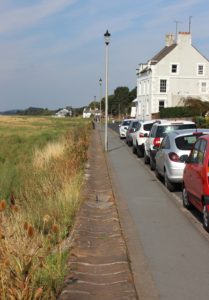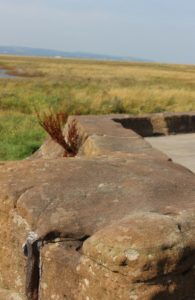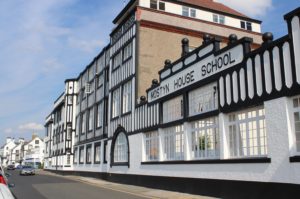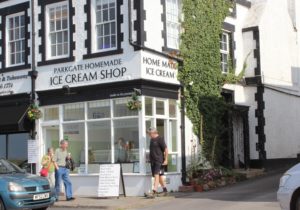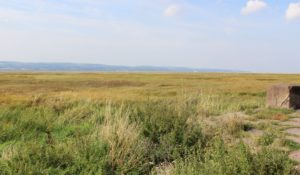I stroll along the sea wall in the warm summer sun with my husband. 50 years ago we lived here as newly-weds, and wondered how much it had changed.
The sandstone sea wall still runs along the pavement, the top worn to a concave shape by generations of feet walking along – I remember my children doing that! Cars are still parked, bumper to bumper, along the front, no car park to tuck them, leaving the vista intact. The shops selling shrimps and delicious home-made ice cream look as popular as ever. We had to buy an ice cream to see if it was still delicious – it was! The picturesque buildings are all still there; the black and white Mostyn House School and the pubs at either end of the village, one now much smarter, covered in colourful flowers in hanging baskets and pots.
50 years ago there was a sign saying “next boat leaves at 2pm”. We thought that was strange, as there was no sea, just marsh – the slightly rotten, muddy smell is still there too. Parkgate was an important port on the river Dee from the start of the eighteenth century, with boats embarking for Ireland. The river gradually silted up and the port was abandoned, superseded by the port of Liverpool on the Mersey. Towards the end of the eighteenth century it was popular as a seaside resort with bathers. With no parked cars, it must have been quite charming. Gradually the sand was replaced by marsh grasses, the village marooned – left without its beach.
People still pretend they are walking along the sea side though, a steady stream of people stroll along and look out to the ghost of the sea! You can imagine the water lapping, the boats bobbing in the waves and children enjoying the sand. I remember walking across the marsh and finding a bit of sand to sit on – probably the last patch!
It is now a nature reserve, and pools have been created so that you can sit and watch the birds while you eat your ice-cream. Display boards tell you about the reserve and what to look for. The dedicated birders wait for a high spring tide, which trickles up to the wall, displacing small rodents for which raptors eagerly await, and there is the chance of a rarity flushed from the reed beds. I remember high tides, they were quite eerie, especially on still, misty autumn mornings.
Enough of nostalgia though! I look across the reed beds, graceful movement synchronised in the breeze. Sunlight glistens and there is the mournful cry of curlews. The Welsh hills on the other side of the estuary are pale and blue in the distance. No, it hasn’t changed much over the years – even someone sitting in their car reading the newspaper, oblivious of the beauty!
